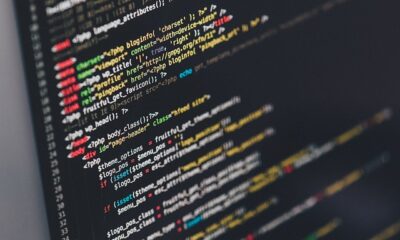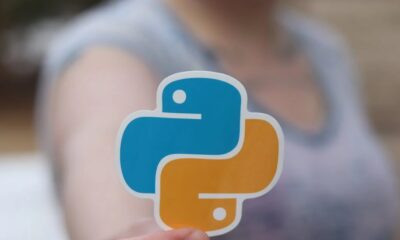Tech
Data Science Roadmap 2023
In today’s data-driven world, organizations are faced with an avalanche of information, and the ability to extract valuable insights from this vast sea of data has become crucial for making informed business decisions.
Consequently, the demand for skilled professionals navigating this data deluge and uncovering meaningful patterns has skyrocketed in recent years.
Are you ready to take your business to the next level? Unlock its true potential with On Demand Ninja, a cutting-edge on-demand application service driven by the power of data science. This platform is designed to transform your business operations, streamline processes and maximise efficiency like never before.
According to job reports from LinkedIn, the Data Science industry’s growth has been phenomenal. From its estimated worth of 37.9 billion USD in 2019, it is projected to reach a staggering 230 billion USD by 2026.
The remarkable surge in demand is propelled even more by the illustrious distinction of Data scientists being hailed as the “most alluring profession of the 21st century” by the esteemed Harvard Business Review.
As a result, Data Science has captured the attention and aspirations of students and professionals alike, who are eager to seize the opportunities this field presents.
Data Science Roadmap
Are you embarking on a Data Science career? Let’s explore the learning roadmap. Data Scientists blend Software Engineering, Statistics, and business acumen to unearth valuable insights.
Here are vital steps to master the skills needed:
- Acquire foundational knowledge
- Develop proficiency in programming and data manipulation
- Deepen statistical expertise
- Learn machine learning techniques
- Refine domain-specific skills.
Each step demands time and effort, with complexity increasing progressively. The pyramid illustrates high-level skills necessary for Data Scientists, ordered by complexity and industry relevance.
Learn Python
Mastering a programming language is crucial for every Data Scientist. Python and R are the most popular languages used by data scientists.
Python is often recommended for beginners because it is easy to understand, has a wide range of libraries and automation frameworks to work with, and a lot of helpful documentation is available.
Including the following programming topics in your learning roadmap is essential:
- Data structures (lists, dictionaries, arrays, etc.)
- User-defined functions, Loops, Conditional Statements
- Searching and Sorting Algorithms
- SQL concepts (joins, aggregations, merges).
Acquiring these abilities provides a sturdy groundwork for effectively handling diverse Data Science endeavours such as machine learning, deep learning, and data visualisation.
Learn Python Libraries
Python’s popularity in the Data Science community stems from its vast array of libraries catering to various Data Science tasks. Some commonly used libraries by Data Scientists include:
NumPy
NumPy, short for Numerical Python, is a powerful library offering methods and functions for efficiently handling and processing large arrays, matrices, and linear algebra operations.
It allows for vectorization, which means performing operations on groups of numbers simultaneously instead of one by one. This leads to faster execution and improved efficiency.
This enhances performance and speed, making NumPy an essential tool for numerical computations and data analysis.
Pandas
Pandas is a highly favoured Python library among Data Scientists, offering powerful built-in functions for efficient data manipulation and analysis of large structured datasets.
It excels in Data Wrangling tasks, supporting two primary data structures: Series and DataFrame. A Series represents a one-dimensional array capable of holding various data types.
On the other hand, a DataFrame is a versatile two-dimensional data structure resembling a spreadsheet or SQL table, allowing columns with multiple data types. Pandas simplifies working with diverse datasets, making it indispensable in Data Science workflows.
Matplotlib
Data Visualization is essential in Data Science. Matplotlib is a versatile library offering methods to create visualisations like graphs, pie charts, and plots. It allows extensive customization and interactivity, enabling you to personalise every aspect of your figures.
Seaborn
Seaborn is a Python visualisation library with built-in functions for various visualisation methods like histograms, bar charts, heat maps, and density plots. Its user-friendly syntax simplifies the process compared to matplotlib, resulting in visually appealing figures.
Learn About Data Collection and Wrangling
Once you have mastered the foundational principles of Python, the subsequent stride involves immersing yourself in the intricacies of Data Collection and Wrangling.
Data Collection involves gathering relevant data from various sources like databases, web scraping, and APIs using methods provided by the Pandas library.
Data Wrangling focuses on preparing and transforming data for analysis, including cleaning, preparing, and feature engineering. Pandas and NumPy libraries offer methods and functions to assist with data manipulation during the Data Wrangling process.
Role of Data Engineering
Data Engineering encompasses the creation of data infrastructure tailored to support the endeavours of Data Scientists, involving the meticulous design, construction, and upkeep of ETL (Extract, Transform, Load) pipelines. While not mandatory for Data Scientists, understanding Data Engineering benefits the job.
Data Engineers use programming languages like C++, Python, Scala, and SQL to build ETL pipelines on raw data from databases like MySQL, MongoDB, etc. And you can find most reliable course reviews at Legit Course Reviewers!
These pipelines have the flexibility to be hosted on cloud-based platforms like AWS, Azure, GCP, and other similar services.
Categories for Machine Learning Algorithm
Machine Learning Algorithms: Categories and Examples
Supervised Learning
Description: These algorithms learn patterns in data with a known target variable.
Examples: Linear Regression, Logistic Regression, Decision Trees, Random Forest, XGBoost, Naive Bayes, K-Nearest Neighbors (KNNs), etc.
Unsupervised Learning
Description: These algorithms come into play when a target variable is scarce.
Examples: K-Means Clustering, Principal Component Analysis (PCA), Association Mining, etc.
Conclusion
Freelancing jobs become a popular and lucrative option for data scientists due to their high demand and the specialised skills they possess.
With ongoing investments in data infrastructure and the widespread adoption of data science solutions across industries, the demand for skilled data scientists will surge in the coming decade.
According to the U.S. Bureau of Labor Statistics, there is a projected 22 percent increase in data science job opportunities from 2020 to 2030, indicating a promising and burgeoning field for aspiring professionals.
-
Blog1 year ago
MyCSULB: Login to CSULB Student and Employee Portal – MyCSULB 2023
-
Android App3 years ago
Cqatest App What is It
-
Android1 year ago
What Is content://com.android.browser.home/ All About in 2023? Set Up content com android browser home
-
Software2 years ago
A Guide For Better Cybersecurity & Data Protection For Your Devices
-
Latest News2 years ago
Soap2day Similar Sites And Alternatives To Watch Free Movies
-
Android2 years ago
What is OMACP And How To Remove It? Easy Guide OMACP 2022
-
Android3 years ago
What is org.codeaurora.snapcam?
-
Business2 years ago
Know Your Business (KYB) Process – Critical Component For Partnerships





























